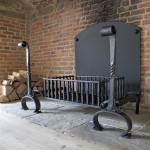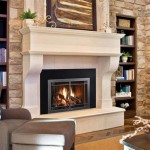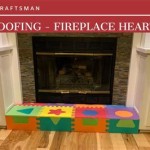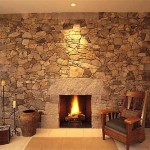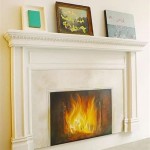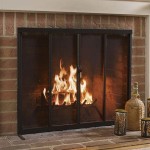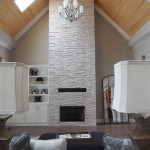Selecting the Right Rug for Your Fireplace: Safety, Style, and Function
A fireplace serves as a focal point in many homes, providing warmth and ambiance. However, the proximity of a fireplace necessitates careful consideration when selecting a rug for the area. The rug not only contributes to the aesthetic appeal of the room but also plays a crucial role in safety and functionality. Choosing the appropriate rug material, size, and style requires a thorough understanding of potential hazards and design principles.
Fire Safety and Rug Materials
The primary concern when selecting a rug for a fireplace is fire safety. Embers and sparks can easily escape from the fireplace, posing a significant risk of ignition. Therefore, the chosen rug material must be inherently fire-resistant or treated to reduce its flammability. Certain materials are better suited for fireplace rugs than others due to their natural properties.
Wool is a generally recommended material for fireplace rugs. It is naturally fire-resistant due to its high moisture content and the lanolin present in the fibers. Wool rugs tend to smolder rather than ignite, providing a crucial window of time to extinguish any embers that may land on the rug. Furthermore, wool is durable and can withstand the wear and tear associated with fireplace use.
Synthetic materials, such as polypropylene and polyester, are less desirable unless specifically treated with fire retardants. These materials are highly flammable and can melt or ignite quickly if exposed to high temperatures. While some synthetic rugs are marketed as stain-resistant and easy to clean, their flammability poses a safety risk that outweighs these benefits. However, a synthetic rug may be acceptable if paired with a fire-resistant barrier or pad.
Natural fibers like cotton, sisal, and jute are also options to consider, but they are more flammable than wool and require additional treatment. Cotton can be treated with flame retardants, but the effectiveness of these treatments can diminish over time. Sisal and jute are relatively durable but can be susceptible to stains and moisture damage. If these materials are chosen, it is crucial to apply a fire retardant spray and regularly inspect the rug for any signs of wear or damage.
When considering any rug material, it is essential to check for certifications from reputable organizations that test for fire resistance. Look for labels indicating that the rug meets specific safety standards, providing assurance that it has undergone rigorous testing. Always prioritize safety over aesthetics when making a rug selection for a fireplace.
Rug Size and Placement for Optimal Functionality
The size and placement of the rug are vital considerations, impacting both the aesthetic appeal and the functionality of the fireplace area. A rug that is too small will appear disproportionate and may not provide adequate protection from sparks and embers. Conversely, a rug that is too large can overwhelm the space and create a tripping hazard.
A general guideline is to select a rug that extends at least 18 inches beyond the fireplace opening on all sides. This buffer zone provides a protective barrier, catching any stray embers that may escape. For larger fireplaces, the rug should extend even further, up to 24 to 36 inches, to ensure sufficient coverage.
Consider the overall dimensions of the room when determining the appropriate rug size. The rug should complement the furniture arrangement and create a cohesive look. In a smaller room, a smaller rug may suffice, while a larger room can accommodate a more substantial rug. Leave adequate space around the perimeter of the rug to avoid a cramped or cluttered appearance.
When placing the rug, ensure that it is securely anchored to prevent it from slipping or sliding. Use a rug pad to provide cushioning and prevent movement. The rug pad also helps to protect the flooring underneath from scratches and wear. Regularly inspect the rug and rug pad for any signs of damage or wear and tear, and replace them as needed.
The shape of the rug can also influence the overall look and feel of the space. A rectangular rug is a classic choice that works well in most settings. A round or oval rug can soften the edges of a rectangular room and add visual interest. Consider the shape of the fireplace and the surrounding furniture when selecting the rug shape.
Style and Design Considerations for Fireplace Rugs
While safety and functionality are paramount, the aesthetic appeal of the rug should also be considered. The rug should complement the overall decor of the room and enhance the fireplace as a focal point. There are numerous styles, patterns, and colors to choose from, allowing homeowners to personalize the space and create a unique ambiance.
Traditional patterns, such as Oriental or Persian rugs, are popular choices for fireplace areas. These rugs often feature intricate designs and rich colors that add warmth and sophistication to the room. They are typically made of wool, which is a durable and fire-resistant material. Traditional rugs can be either antique or contemporary reproductions, offering a range of options to suit different budgets and preferences.
Contemporary rugs offer a more modern and minimalist aesthetic. These rugs often feature geometric patterns, abstract designs, or solid colors. They can be made of various materials, including wool, synthetic fibers, and blends. When selecting a contemporary rug for a fireplace, prioritize materials with fire-resistant properties or those treated with flame retardants.
The color of the rug should complement the fireplace surround, the walls, and the furniture. Neutral colors, such as beige, gray, and brown, are versatile choices that blend well with a variety of color schemes. Bold colors, such as red, blue, and green, can add a pop of color and create a focal point. Consider the existing color palette of the room and choose a rug color that enhances the overall aesthetic.
The texture of the rug can also contribute to the overall look and feel of the space. A plush, high-pile rug can provide a cozy and inviting feel, while a low-pile rug is more durable and easier to clean. Consider the level of foot traffic in the area and choose a rug texture that is appropriate for the intended use.
Ultimately, the style and design of the fireplace rug should reflect the homeowner's personal taste and complement the overall decor of the room. By carefully considering the various factors involved, it is possible to select a rug that is both safe and aesthetically pleasing.
The rug becomes an integral part of the fireplace area, enhancing both its visual appeal and functional performance through thoughtful consideration of these points. The right choice ensures a welcoming and secure environment for enjoying the warmth and ambiance of the fireplace.
Regular maintenance, including vacuuming and professional cleaning, is crucial for preserving the rug's appearance and fire-resistant properties. Timely addressing of issues such as loose fibers and spills will ensure the rug is a safe and stylish addition to the home.

Guide To Fireplace Rugs Direct Fireplaces

10 Fireplace Rugs For In Front Of The Hearth Ruggable Blog

A Guide To Fireside Rugs The Rug Er Blog

Photos From Just Nothing Else S Post Cozy Fireplace Rugs

Bear Skin Rug Home Theater Room Design Rugs

Ultimate Fireplace Rug Mat Guide Hearth Rugs Sizing Materials Homely

Picking The Perfect Fireside Rug

How Far Should A Rug Be From Fireplace Vaheed Taheri

Lammfell Quality Living Room Furniture Bear Skin Rug Fireplace Rugs

Super Soft Faux Fur Rug And Champagne Flutes By The Fireplace Of Ye Olde Walkerville Bed Breakfast Windsor Tripadvisor


